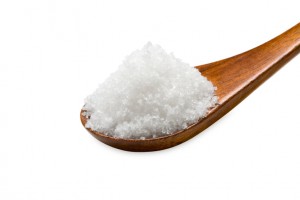The American Heart Association has commented on the FDA’s proposal to reduce American consumer’s sodium consumption with an interesting twist. That organization would like to see salt’s status as a “safe ingredient” modified. The AHA would also like to see more limits put on the process that lets food companies make their own GRAS determinations.
The GRAS List
GRAS stands for Generally Regarded As Safe. That list of food additives was developed in 1958 as an amendment to the 1938 Federal Food, Drug, and Cosmetics Act. It distinguishes between new additives that need FDA approval before use, and additives and ingredients that have been used for years and are deemed safe “with a consensus of expert opinion” and “reasonable scientific certainty that the substance is harmless when used as intended.” Ingredients such as salt and sugar are on the GRAS list.
 That sounds reasonable, but some substances that have been on the GRAS list since 1958 have since been banned. For instance, cyclamates were on the original 1958 GRAS list. They were banned in 1969 when they were shown to be carcinogenic in rats.
That sounds reasonable, but some substances that have been on the GRAS list since 1958 have since been banned. For instance, cyclamates were on the original 1958 GRAS list. They were banned in 1969 when they were shown to be carcinogenic in rats.
Another substance, monosodium glutamate (MSG) is on the GRAS list, although many people have adverse physical reactions to that ingredient. In 2003, the government started requiring that MSG be listed on food labels so consumers could avoid it.
The Salt Issue
In its comment, the AHA stated that experts think sodium, one of the two components of salt, “has negative health consequences”, so it “does not meet the ‘safe’ requirement.” The AHA states:
“The main reason people continue to consume too much sodium is because there is too much salt added to the food supply… 77% of sodium in the diet comes from salt added to processed foods, beverages, and restaurant foods. Even fresh meats are being injected with sodium to add weight and moisture.”
The ubiquitous nature of sodium in processed foods makes it very difficult for consumers to control the amount of sodium they consume. The AHA believes that an overall reduction in sodium content in the food supply is necessary. One way to accomplish that is to change salt’s GRAS status.
Salt was one of the GRAS substances that the FDA thought about reviewing in 19. The Select Committee on GRAS Substances said at that time that, “It is the prevalent judgment of the scientific community that consumption of sodium chloride in the aggregate should be lowered.” The FDA took no action then.
In 1978, the Center for Science in the Public Interest (CSPI) asked the FDA to revoke sodium’s GRAS status and wanted the government to regulate that ingredient as a food additive. The FDA declined to do so that that time, but stated that “if the sodium content of processed food was not ‘substantially reduced’ it would consider … changing salt’s GRAS status.” The CSPI also petitioned the FDA in 2011 to regulate salt in processed foods.
There are some voluntary “sodium reduction efforts” currently taking place in the food industry and restaurant industry. But the AHA thinks those efforts do not go far enough, partially because food companies often manufacture the same product with less salt for markets outside the United States.
And mandatory regulations for salt content restriction are 20 times more effective than voluntary restrictions, according to a 2010 study published in the Journal Heart. In Britain, for instance, the United Kingdom’s Consensus Action on Salt and Health has reduced sodium consumption by 10% within five years.
The AHA would like to see the FDA reduce sodium content in processed foods over a period of years to let companies and restaurants adapt. Intermediate limits could be set until an ideal limit is reached.
The Self-Affirming Issue
One problem with the system, as it stands now, the AHA says, is that food manufacturers are allowed to self-affirm a GRAS designation and are not required to inform the FDA about that designation. The AHA would like to see the GRAS process strengthened.
The AHA stated:
“Food manufacturers make their own GRAS determinations. If a manufacturer determines that a use of a substance is GRAS as set forth in the FDA regulations, it does not need to seek premarket approval from the FDA to use the substance in that way.
We are further concerned that manufacturers may choose – but are not required – to notify the FDA of their GRAS determination. If manufacturers choose not to submit notifications to the Agency, the FDA will, in general, have no information about those GRAS determinations.
Another weakness in the GRAS process is that there is no mechanism for systematically ensuring the independence and sufficiency of the expert determinations that companies may rely on for their GRAS determinations.”
The Government Accountability Office (GAO) published a report in 2010 that echoes these concerns. The AHA would like to see random audits and guidance for documenting GRAS determinations, along with requirements for FDA notification.




